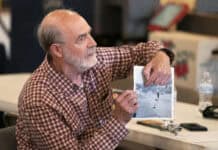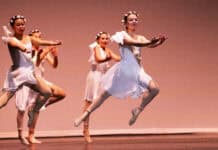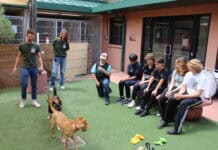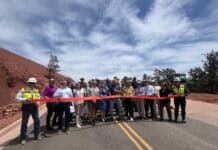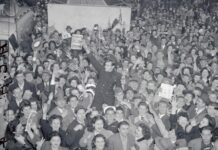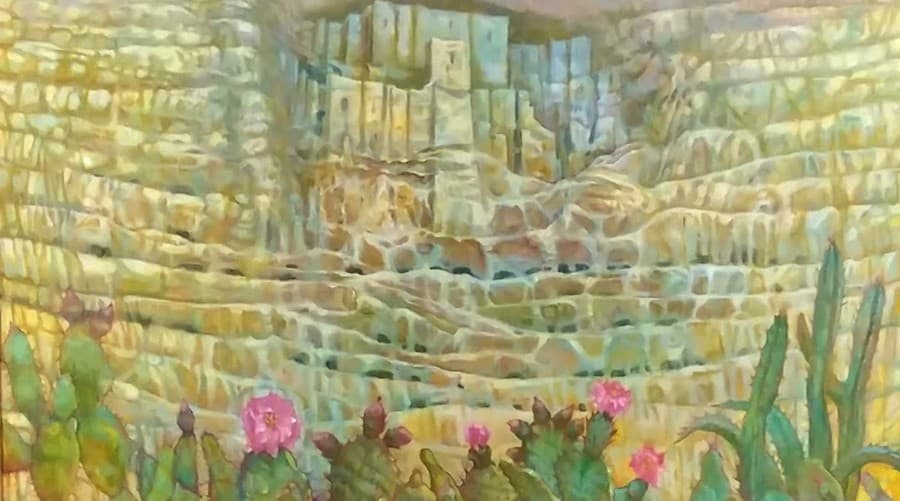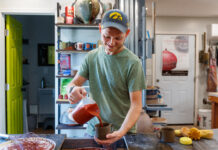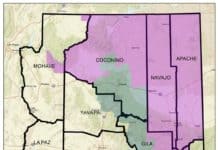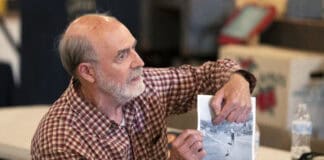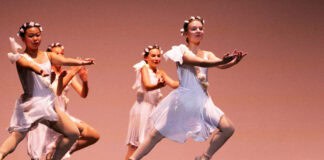The Verde Valley Archaeology Center hosts a collection of ancient cultural artifacts from throughout Sedona and the Verde Valley.
In recent years, the center has begun to receive art as the beginning of its art acquisition efforts for works either by Native American artists or of art with an archaeological theme. The Center has announced the donation of a major painting, “Montezuma Castle,” by Santos Zingale [1908-1999]. The painting will go on public display Saturday, Sept. 21.
Zingale was an American artist born in Wisconsin in 1908 into a Sicilian family. He worked for the Public Works of Art Project from 1933 to 1934. The PWAP was a program to employ artists as part of the New Deal during the Great Depression and was commissioned to paint large-scale murals in public buildings for the Works Progress Administration. The Art Project encouraged experimentation in painting, especially in the graphic arts.
Zingale painted the post office mural of commercial fishermen and their boats in Sturgeon Bay, Wisc. He also did a three-section, 40-foot mural of the founding of Racine, Wisc., in the city’s Mitchell High School. He gained acclaim as a regionalist artist for his drawings of social and urban realism and was labeled as a “radical artist” by the press.
As a result, in 1935 he wrote, “Art must help the development of human consciousness and improve the social order.”
In 1943, he was awarded a master’s degree for his mural, Democracy in Education, at the University of Wisconsin-Madison’s School of Education. When World War II came about, he served in the Navy from 1944 to 1946, all the while making sketches from life upon the USS Bremerton. After his discharge, he was given the status of Emeritus Professor at UW-Madison, where he taught until his retirement in 1978. Zingale passed away in 1999 in Madison, Wisconsin.
The large work donated to VVAC of Montezuma Castle, painted in 1978, is 54 inches by 46 inches. It is typical of Zingale’s style, which is representational but not realist. His early scenes of urban realism used strong contrast of light and dark.
Later, like the Montezuma Castle work, he produced colorful paintings that were part fact and part fantasy. Color, design and painted surfaces were major concerns in his works of art. The painting of Montezuma Castle may be an example of his more whimsical works if one were to reference the soft colors, as well as the desert flora presented in the foreground.
Visiting Italy three times as an artist, Zingale had particular interest in painting remains of Roman civilization and it is evident that this interest held for ancient Southwest culture. The work appears to be part of a collection of paintings Zingale did featuring the American Southwest, such as “Bryce Canyon” and “Canyon Ruins I.”
The center is located at 385 S. Main St. in Camp Verde. The museum is open Tuesdays through Saturdays from 10 a.m. to 4 p.m. and is free to the public. Additional information on the center’s activities is available at verdevalleyarchaeology.org, or by calling 567-0066.


